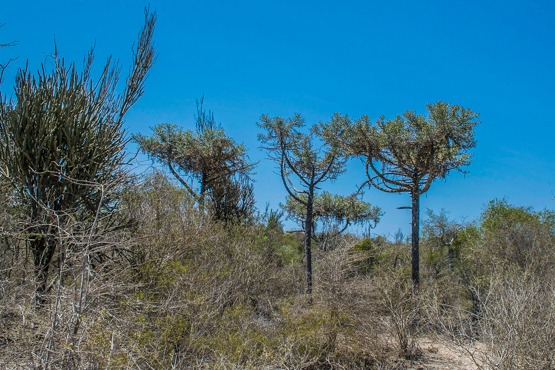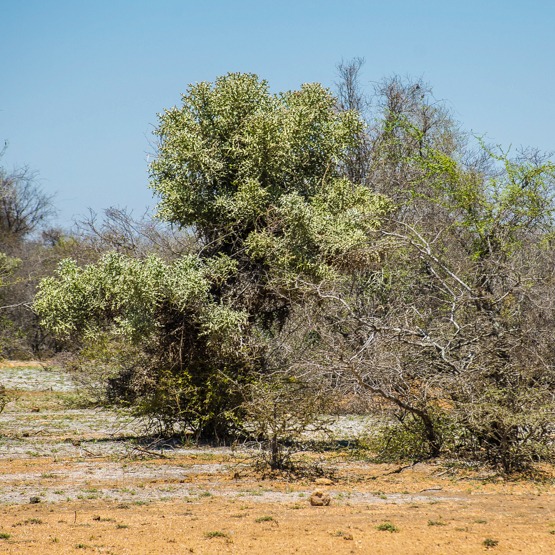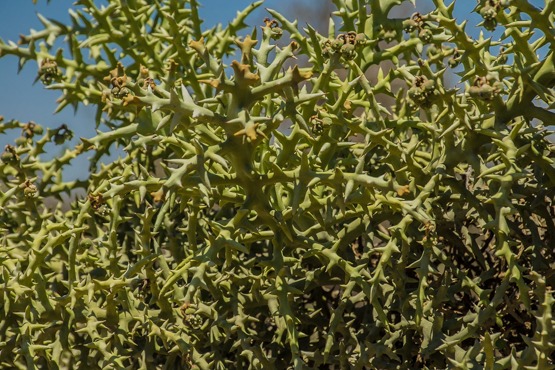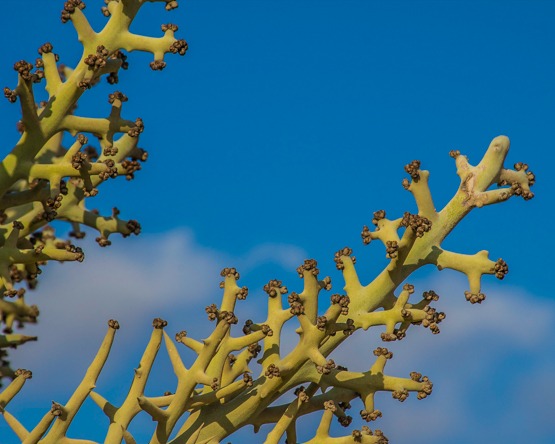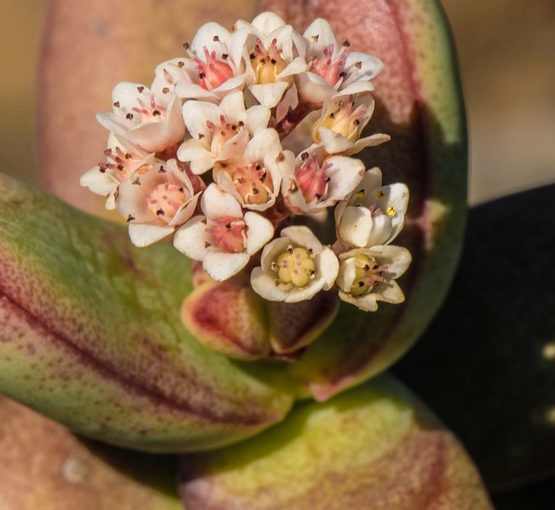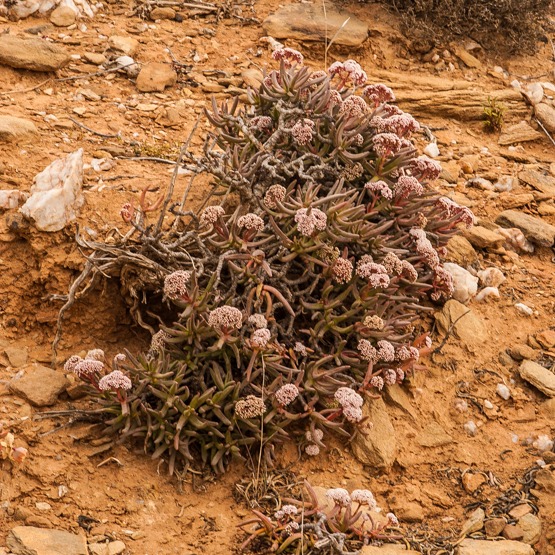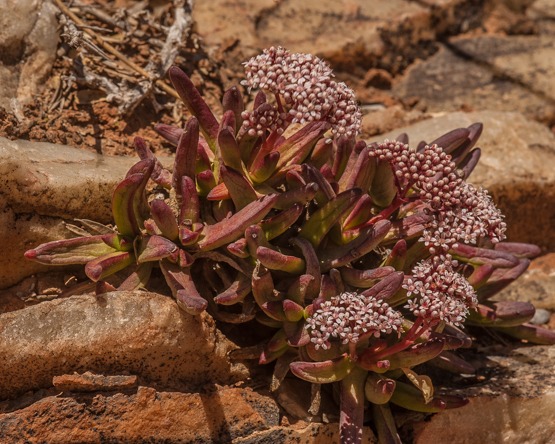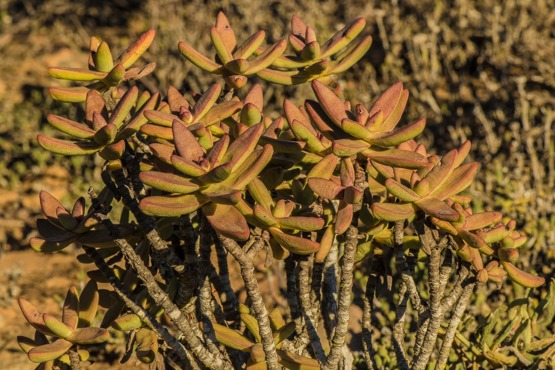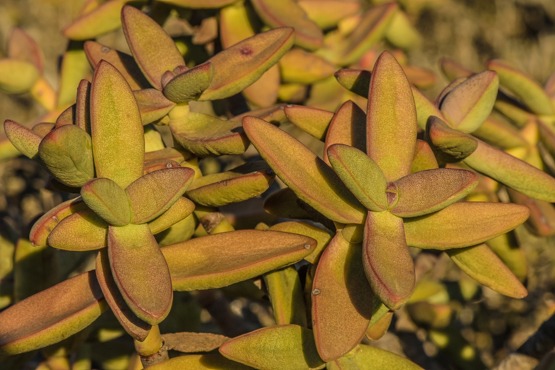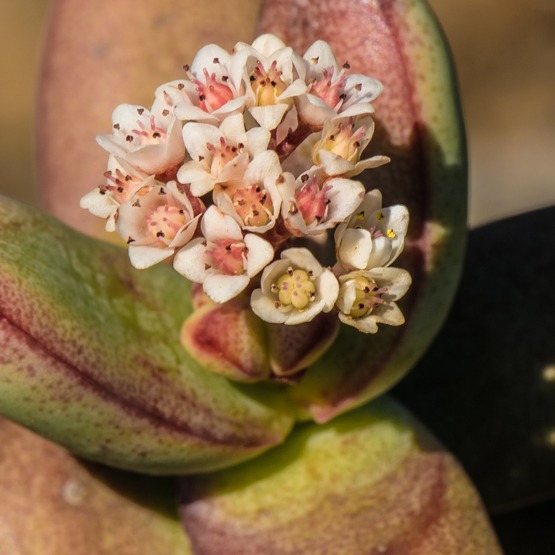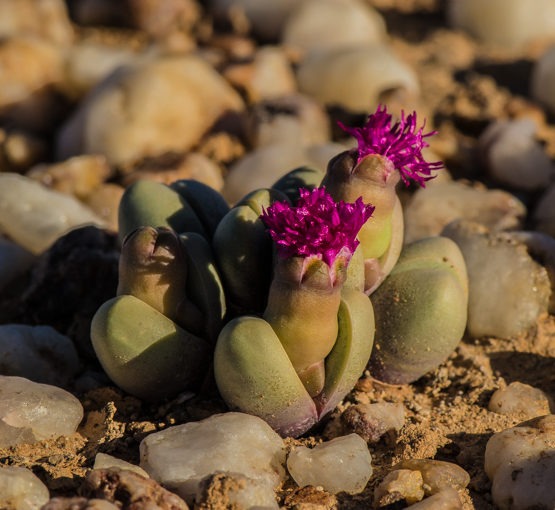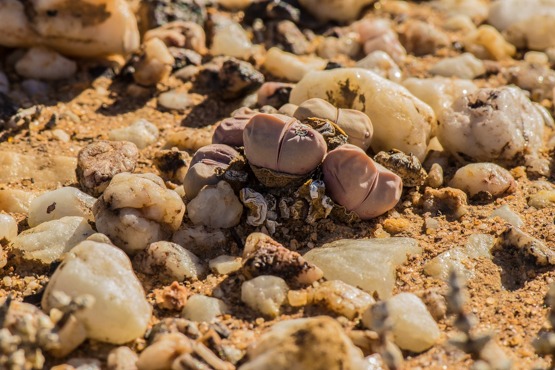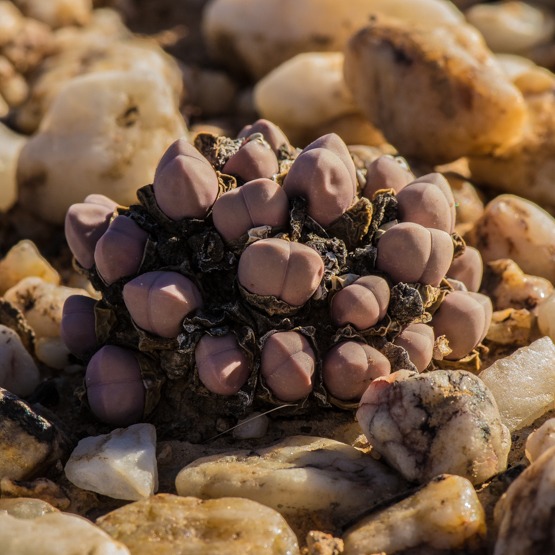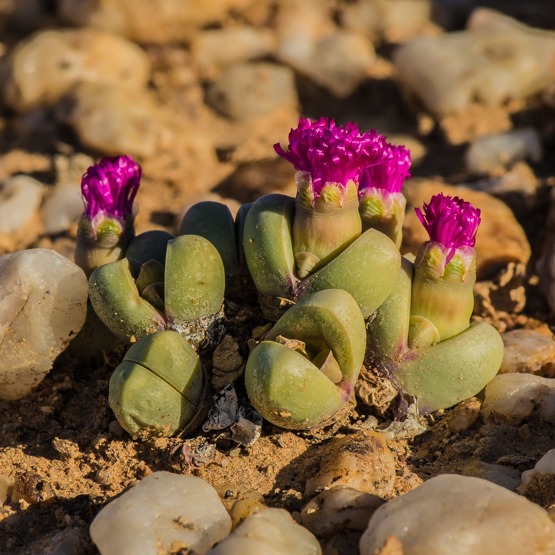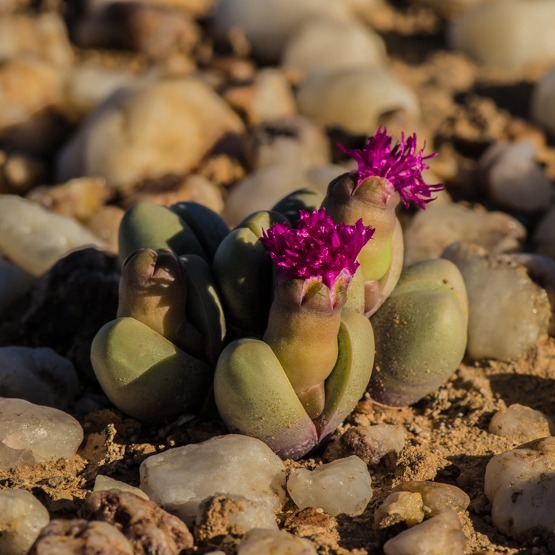Several years ago I made a Powerpoint presentation about the ways and means succulents use to survive in nature. With apologies to Charles Darwin, I gave it the name “The survival of the fattest”. At a certain moment, it seemed a good idea to adapt part of the contents and publish them as a serial on this blog. (https://enjoysucculents.com/2018/02/25/the-survival-of-the-fattest/)
About 2 years ago, I visited Namaqualand with three friends from Calitzdorp. Two of them, George Hattingh and Buck Hemenway, are succulent enthusiasts and the third one, Neil Curry, spent most of his working years as a professional filmmaker, receiving many awards for his nature films.
One evening, after another exhausting as well as exhilarating day hunting for succulents, Neil said: “You know guys, to be honest, I had some reservations about this trip, as I am not nearly as knowledgeable and interested in succulents as you people. But seeing you busy in the field, full of joy and excitement, crawling around on your knees and talking Latin to each other, brought back memories of many years ago when I was working on the idea of making a film about Namaqualand. The idea never materialised, one of the reasons being that I could not find a strong enough storyline. Being here now with the three of you, all of a sudden gave me the idea that this trip in itself could be the basis for a film on Namaqualand and its succulents.”
Of course a storyline is highly important, but it has to be fleshed out. After playing around with a few options, I realised that the information contained in “The survival of the fattest” might well serve that purpose. But a lot of work and two more visits to Namaqualand were needed before Neil deemed the film good enough to be released under his name.
So now you can enjoy the film The survival of the fattest on https://www.youtube.com/watch?v=3PIyzqfYK9Y . (Also available on DVD at the Calitzdorp Tourism Office as well as the Calitzdorp Museum).
You may also have a look at https://www.diehoorn.com/nuus/beautiful-documentary-on-survival-of-succulents/.

